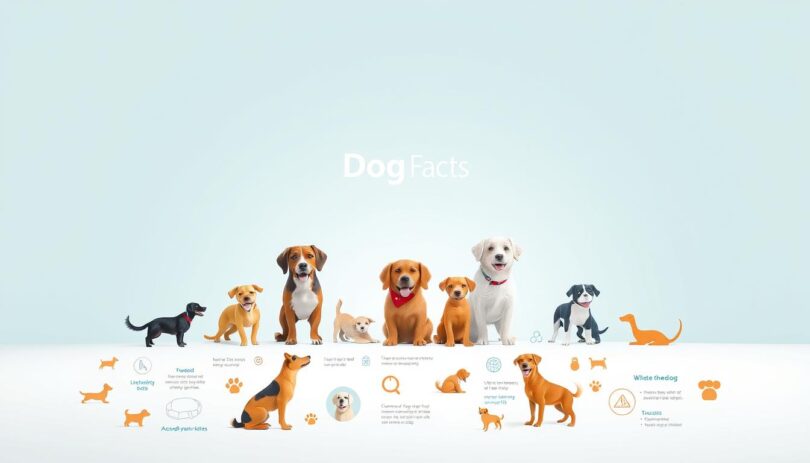Dogs have been our loyal companions for thousands of years, offering unwavering support and joy to families worldwide. Their journey from wild animals to beloved pets is a testament to their unique bond with humans.
Domesticated over 20,000 years ago, dogs have evolved into remarkable protectors and friends. Did you know that a dog's sense of smell is so powerful it can detect scents we can't even perceive? This ability makes them invaluable in various roles, from service animals to search and rescue heroes.
Understanding our pets helps us better care for them. Whether you're a seasoned owner or a new pet parent, knowing these fascinating facts can deepen your connection with your furry friend and improve their well-being.
Unforgettable Canine Behavior and Communication
Dogs communicate in ways that are both subtle and powerful. Their body language and gestures speak volumes, helping them convey emotions and intentions without words. By paying attention to these signals, pet owners can better understand their pets and build stronger relationships.
One of the most noticeable forms of communication is a dog's tail. A wagging tail can signal happiness or excitement, while a tucked tail may indicate fear or anxiety. Ears also play a significant role—floppy ears that relax to the sides often show contentment, while ears pulled back can suggest discomfort or stress.
Facial expressions are another key aspect of canine communication. A soft, open face with relaxed eyes often signifies a calm state, whereas a furrowed brow or avoidance of eye contact may point to anxiety or fear. Understanding these cues can help owners respond appropriately, whether it's offering reassurance or giving space.
Playful gestures, like the “play bow” where a dog lowers its front legs, are clear invitations to engage. Conversely, a rigid stance or raised hackles can signal stress or alertness. By learning to interpret these signals, owners can create a more harmonious and understanding environment for their pets.
Explore facts a about dogs: Health, Senses, and Instincts
Dogs possess extraordinary abilities that set them apart from other animals. Their senses and instincts play a crucial role in their daily lives and interactions with humans.
The Incredible Sense of Smell and Hearing
A dog's sense of smell is remarkably powerful. Bloodhounds, for instance, can follow trails that are days old. This ability is 40 times stronger than that of humans, making them invaluable in tasks like search and rescue operations. Dogs can even detect certain diseases, such as cancer, through scent.
In terms of hearing, dogs can pick up sounds at frequencies as high as 35,000 Hz, compared to humans who can only hear up to 20,000 Hz. This keen sense of hearing helps them respond to high-pitched sounds that are inaudible to humans.
Instincts, Time Awareness, and Emotional Cues
Dogs exhibit impressive time awareness. They can differentiate between various time intervals, which helps them anticipate routines like feeding times. Their instincts also guide their behavior, whether it's hunting or protecting their territory.
Emotional cues are another area where dogs excel. They can sense their owner's emotions, often providing comfort when they sense sadness. This emotional intelligence strengthens the bond between dogs and their human families.
By understanding these instincts and cues, pet owners can better care for their dogs, creating a more harmonious home environment.
Diverse Dog Breeds and Fun Historical Insights
Dogs have been part of human history for thousands of years, and their diversity is truly amazing. From tiny Chihuahuas to massive Great Danes, each breed has its own unique story.
Ancient Breeds, Royalty, and Unusual Traditions
The Saluki, one of the oldest dog breeds, was cherished by Ancient Egyptian royalty. These dogs were so valued that they were often buried alongside their owners. In some cultures, dogs were even considered sacred and given special roles in religious ceremonies.
Modern Favorites and Breed-Specific Facts
Today, breeds like Labradors and Golden Retrievers are popular pets. But did you know that the Poodle’s distinctive haircut was originally designed to help them swim better? Their curly fur was meant to insulate them in cold water while hunting.
Some dogs have unique traits that set them apart. For example, Dalmatians are often deaf in one ear, and Bloodhounds can follow scents that are days old. These special abilities make each breed fascinating in its own way.
Understanding these differences helps pet owners appreciate their furry friends even more. Whether you have a high-energy Labrador or a graceful Saluki, knowing their background can deepen your connection with them.
Final Pawspective on Your Canine Companion
As we wrap up our journey through the fascinating world of dogs, it's clear that these animals are so much more than pets. They are family members, offering unwavering support and joy to families worldwide. From their incredible senses to their unique behaviors, understanding these aspects can deepen your bond with your furry friend.
By embracing the insights shared here, you can provide better care, training, and health management for your pet. Whether it's recognizing emotional cues or appreciating breed-specific traits, informed care fosters a harmonious home environment. Remember, the connection between humans and dogs is truly special.
So, cherish the moments with your canine companion. With the right knowledge, you can enhance their well-being and enjoy a more enriched relationship. After all, your dog is more than just a pet—they're a beloved member of your family.








Leave a Comment